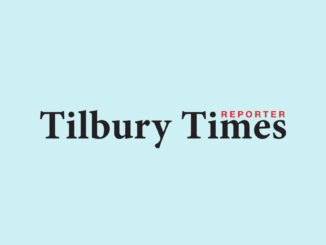
The Bank of Canada’s new mandate will see the central bank continue to target inflation in a range of between one and three per cent, but start keeping one eye on the job market in making its policy decisions, too.
Finance Minister Chrystia Freeland and Bank of Canada governor Tiff Macklem will have more details on the bank’s new mandate at a news conference in Ottawa at 11 a.m. ET.
Much like many other central banks, the Bank of Canada has targeted inflation since 1991, when its mandate was to set policy with a view to keeping inflation in a range of between one and three per cent.
All things being equal, that means the bank’s only job is to try to nudge inflation up or down as needed. When inflation is low, the bank generally cuts its rates to encourage borrowing and spending and investment. It raise its rate when inflation is above that range to try to cool things down.
The system has generally worked well for decades, but the pandemic has thrown a wrench in the works, when sustained low interest rates were a factor causing inflation to run near zero early on in the pandemic and more recently running at an 18-year high.
The new mandate gives the bank the ability to keep targeting the inflation the way it always has, but gives it added leeway to consider what’s happening with Canada’s employment picture in setting its policy.
The government and the bank
While a change, that’s well short of implementing what’s known as a
Economist Avery Shenfeld with CIBC says the new mandate makes it clear that worrying about inflation is still the No. 1 target.
Economist Benjamin Reitzes with BMO Capital Markets agrees with that assessment of the impact of the new policy.
Finance Minister Chrystia Freeland and Bank of Canada governor Tiff Macklem will have more details on the bank’s new mandate at a news conference in Ottawa at 11 a.m. ET.
Much like many other central banks, the Bank of Canada has targeted inflation since 1991, when its mandate was to set policy with a view to keeping inflation in a range of between one and three per cent.
All things being equal, that means the bank’s only job is to try to nudge inflation up or down as needed. When inflation is low, the bank generally cuts its rates to encourage borrowing and spending and investment. It raise its rate when inflation is above that range to try to cool things down.
The system has generally worked well for decades, but the pandemic has thrown a wrench in the works, when sustained low interest rates were a factor causing inflation to run near zero early on in the pandemic and more recently running at an 18-year high.
The new mandate gives the bank the ability to keep targeting the inflation the way it always has, but gives it added leeway to consider what’s happening with Canada’s employment picture in setting its policy.
The government and the bank
believe that the best contribution of monetary policy to the well-being of Canadians is to continue to focus on price stability,the central bank said in a release, adding that they
also agree that monetary policy should continue to support maximum sustainable employment.
The bank will continue to use the flexibility of the one to three per cent control range to actively seek the maximum sustainable level of employment when conditions warrant.
While a change, that’s well short of implementing what’s known as a
dual mandatewhereby the bank would consider two things and weigh them against each other, and theretically try to optimize both at once.
Economist Avery Shenfeld with CIBC says the new mandate makes it clear that worrying about inflation is still the No. 1 target.
The words ‘will continue’ implies that this is something that the Bank of Canada has already been doing, and ‘when conditions warrant’ implies that the primary goal remains the achievement of the inflation target,he said.
This is not a dual mandate with an equal weighting on inflation and full employment.
Economist Benjamin Reitzes with BMO Capital Markets agrees with that assessment of the impact of the new policy.
It’s clear that the employment aspect is going to be used as needed rather than providing a firm restriction on policy, though it provides a bit more flexibility for the Bank of Canada,he said.



Be the first to comment